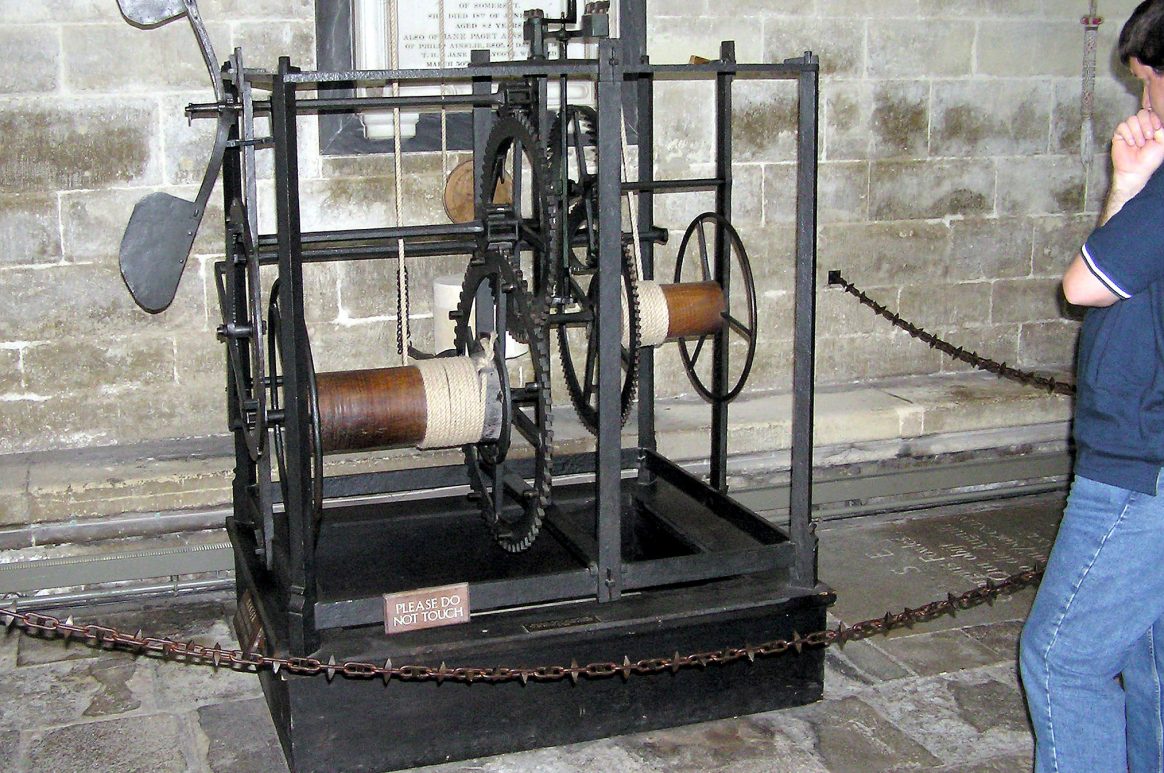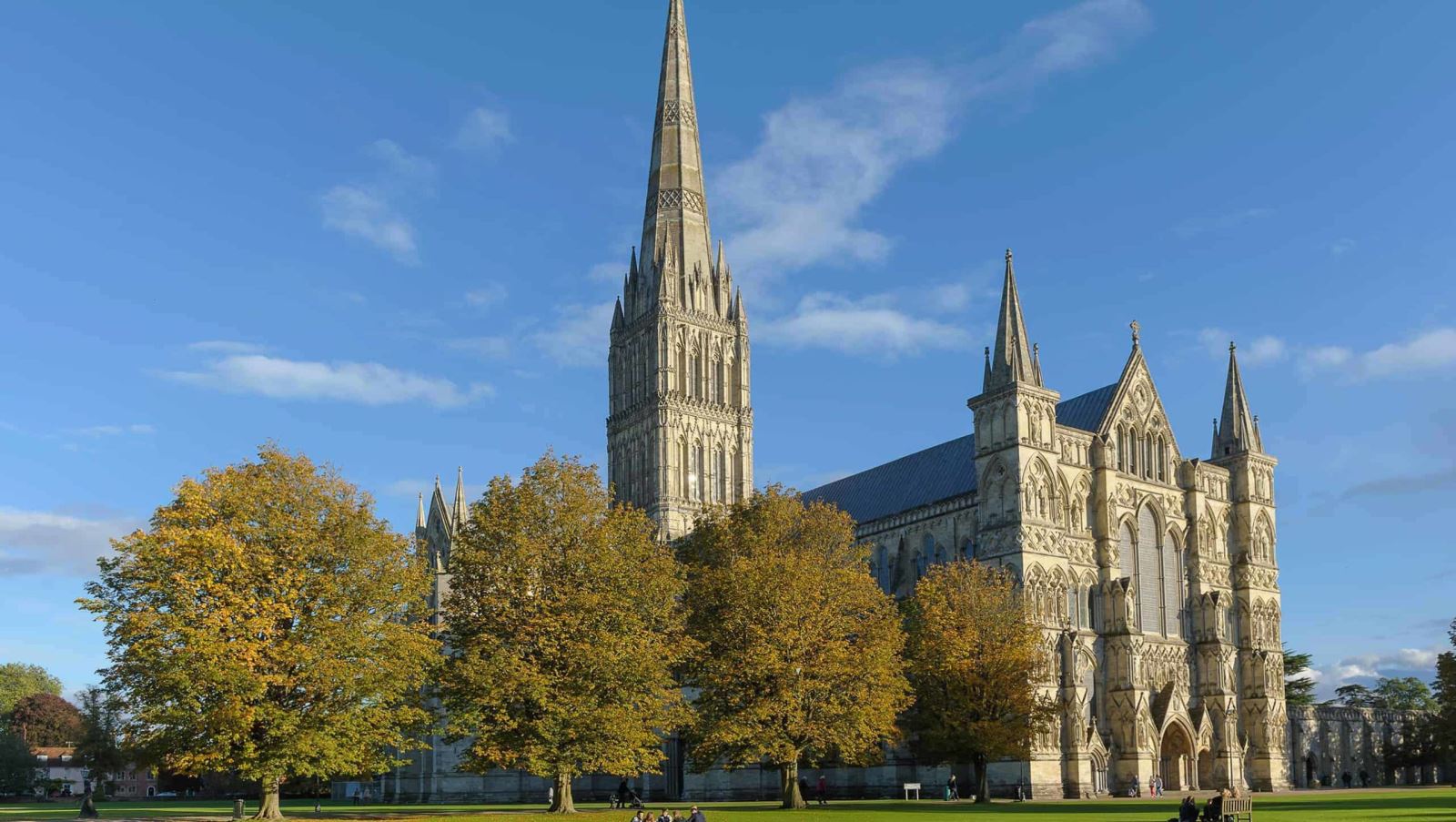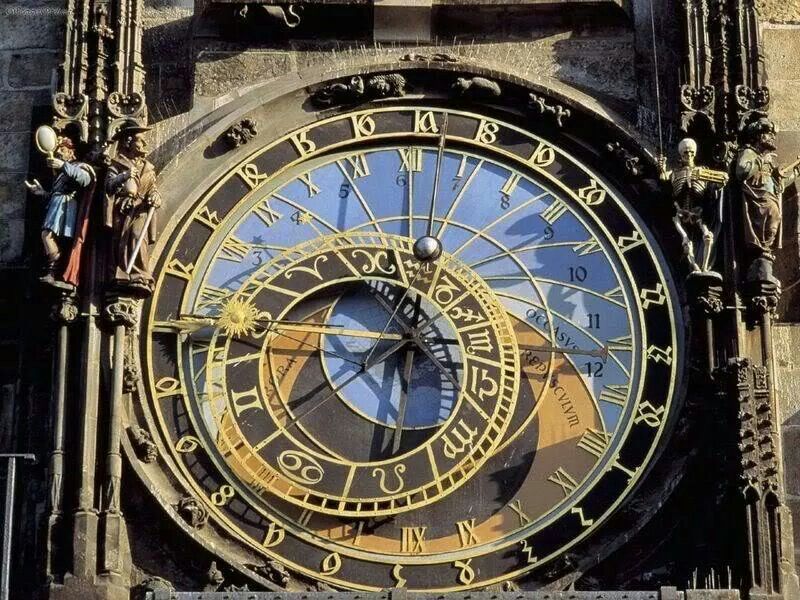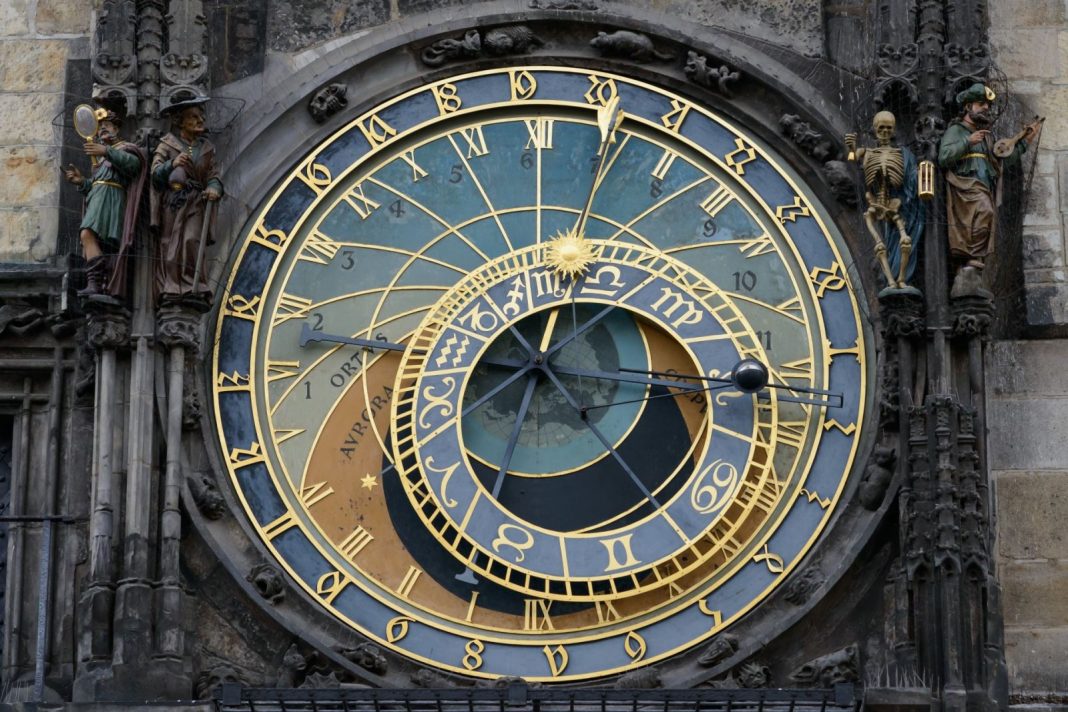Salisbury Cathedral, formally known as the Cathedral Church of the Blessed Virgin Mary, is an Anglican cathedral in Salisbury, England. The cathedral is regarded as one of the leading examples of early English Gothic architecture.
 Its main body was completed in 38 years, from 1220 to 1258.
Its main body was completed in 38 years, from 1220 to 1258.

 Since 1561, the cathedral has had the tallest church spire in the United Kingdom, at 404 feet (123 m). Visitors can take the “Tower Tour”, in which the interior of the hollow spire, with its ancient wooden scaffolding, can be viewed.
Since 1561, the cathedral has had the tallest church spire in the United Kingdom, at 404 feet (123 m). Visitors can take the “Tower Tour”, in which the interior of the hollow spire, with its ancient wooden scaffolding, can be viewed.
 The cathedral has the largest cloister and the largest cathedral close in Britain at 80 acres (32 ha). It contains a clock which is among the oldest working examples in the world, and has the best surviving of the four original copies of Magna Carta. In 2008, the cathedral celebrated the 750th anniversary of its consecration.
The cathedral has the largest cloister and the largest cathedral close in Britain at 80 acres (32 ha). It contains a clock which is among the oldest working examples in the world, and has the best surviving of the four original copies of Magna Carta. In 2008, the cathedral celebrated the 750th anniversary of its consecration.
 The Salisbury Cathedral clock, which dates from about AD 1386, is supposedly the oldest working modern clock in the world. The clock has no face; all clocks of that date rang out the hours on a bell. It was originally located in a bell tower that was demolished in 1792.
The Salisbury Cathedral clock, which dates from about AD 1386, is supposedly the oldest working modern clock in the world. The clock has no face; all clocks of that date rang out the hours on a bell. It was originally located in a bell tower that was demolished in 1792.
 Following this demolition, the clock was moved to the Cathedral Tower, where it was in operation until 1884. The clock was then placed in storage and forgotten until it was discovered in an attic of the cathedral in 1928. It was repaired and restored to working order in 1956. In 2007, remedial work and repairs were carried out.
Following this demolition, the clock was moved to the Cathedral Tower, where it was in operation until 1884. The clock was then placed in storage and forgotten until it was discovered in an attic of the cathedral in 1928. It was repaired and restored to working order in 1956. In 2007, remedial work and repairs were carried out.












